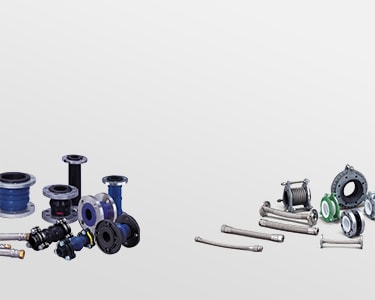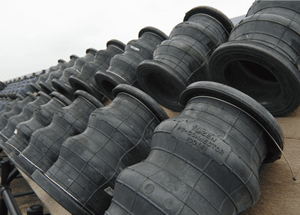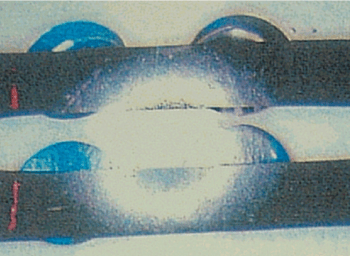
Technical data
The SK10 – built for 21st-century water systems
The SK10 revolution in rubber materials
〈Evaluation results〉
SK10is Rubber materials which feature high resistance to degradation due to chlorine, ozone etc. as well as excellent durability against repeated displacement, pressure fluctuations etc., and which are also environmentally friendly

Example of carbon outflow due to rubber degradation in a clean water line
Exposure test


High chlorine resistance
Chlorine impact evaluation documents
Elapsed time: One day Chlorine concentration of 3,000ppm at temperature of 80°C
Elapsed time: 15 days Chlorine concentration of 3,000ppm at room temperature of 23°C
| Before test | Elapsed time: One day | Elapsed time: 15 days | Results | |
|---|---|---|---|---|
SK10 |
 |
 |
 |
Almost no surface degradation has occurred |
CR |
 |
 |
 |
Surface cracking has occurred, leading to penetration and later hardening and degradation |
EPDM |
 |
 |
 |
High chlorine penetration compared to CR |
High ozone resistance
Ozone water infiltration test
Dissolved ozone concentration:
6-8mg/ℓ
Dissolved temperature:
20±2°C
Oxygen flow rate:
300mℓ/min
External inspection:
Inspected at 5x and 40x magnification using a VH-7000 digital HD microscope.

(5x)
This product suffers little effect from ozone compared to traditional rubber.
We recommend fluoro carbon polymer flexible joints where ozone concentration is high such as directly after ozone disinfection or cleaning.
| Results | ||
|---|---|---|
| SK10 | ◎ | *No occurrence of cracking was observed
Surface changes resemble EPDM; while adhesion and whitening were observed, no foreign matter deposits could be observed. |
| CR | ○ | *No occurrence of cracking was observed, surface degradation was the fastest, and carbon black deposits were observed |
| EPDM | ○ | *No occurrence of cracking was observed, surface changes were slow compared to CR, but carbon black deposits were later observed. |
High bending fatigue resistance
Physical property comparison conducted at the Chemicals Evaluation and Research Institute
Ordinary state
| Name of specimen | SK10 | CR | EPDM |
|---|---|---|---|
| Hardness(Hs-JIS A) | 60 | 62 | 62 |
| Tensile strength(MPa) | 23.8 | 16.0 | 24.0 |
| Stretching(%) | 700 | 480 | 700 |
| Tearing strength(KN) | 43 | 38 | 45 |
Aging test (Geer Type Aging Oven test, 96 hours at 100±1°C)
| Name of specimen | SK10 | CR | EPDM |
|---|---|---|---|
| Changes in hardness(Hs) | +7 | +12 | +5 |
| Rate of changes in tensile strength(%) | +9 | -4.6 | -7.1 |
| Rate of changes in stretching(%) | -16 | -21.4 | -22.4 |
Testing method: JIS K 630-1995 “Vulcanized Rubber Physical Testing Method”
Notes: Room temperature of 23°C. Testing machine type: Load cell type 500N
Observations: Tensile strength increased in the aging test, the opposite to CR and EPDM.
This evaluation demonstrated that the product has excellent bending fatigue and cyclic fatigue resistance.
In addition, the repeated pressure fluctuation performance increased to over twice that of currently-available products.
